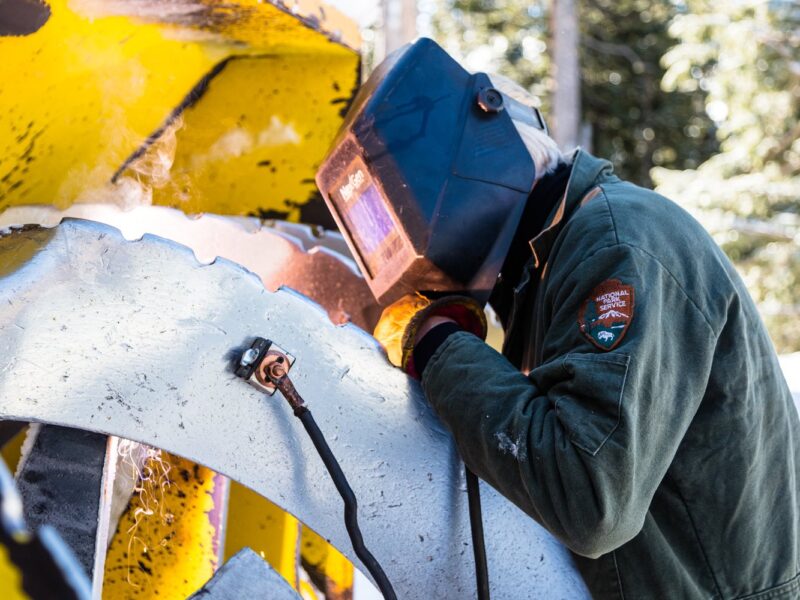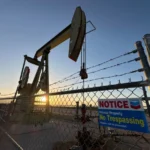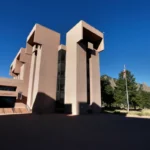Moving Heavy Metal at High Altitude in Yellowstone
Road crews hustle to plow mountain roads by Memorial Day weekend
- Published In: Other News & Features
- Last Updated: May 27, 2023

Sparks fly below the welding mask worn by a maintenance worker with the National Park Service who is making repairs in 2017 to a rotary plow used to clear snow from Yellowstone National Park and the Beartooth Highway. (Courtesy photo from Jacob W. Frank/National Park Service)
By Ruffin Prevost
Special to the Wyoming Truth
CODY, Wyo. — For several days this spring — after Yellowstone National Park had closed to snowmobiles and snow coaches, but before it had opened to automobile traffic — road maintenance crews there were burning through 1,500 gallons of diesel fuel per day. But they were hauling nothing and not building anything. In fact, they were making no permanent changes to any roads.
They were plowing snow.

In a majorly mechanized and carefully choreographed rite of spring that rivals any annual display made by flora or fauna, dozens of skilled workers operating a vast assemblage of heavy metal spend weeks each April and May breaking up ice and plowing snow in a race to open vast stretches of Wyoming’s most scenic byways in time for Memorial Day weekend.
Most mountain roads in Yellowstone and the surrounding area open on a staggered schedule starting in late April and continuing throughout May. But two of the most challenging road segments typically don’t open until the Friday before Memorial Day: Yellowstone’s Dunraven Pass between Canyon Village and Tower Fall; and the Beartooth Highway, snaking along the Wyoming-Montana border, between the Montana gateway towns of Cooke City and Red Lodge.

Despite the usual challenges, crews from the National Park Service, Wyoming Department of Transportation (WYDOT) and Montana Department of Transportation (MDOT) have reported few major issues or last-minute obstacles in meeting the start-of-summer deadline.
That’s assuming a late-season storm doesn’t put everyone’s plans on ice at the last minute.
“Some years, we just get the bare minimum done in time, but this year we’re done now and just tidying up,” MDOT Maintenance Chief Tom Tilzey said by phone from Billings, as crews were patching potholes and mending guardrails along the 69-mile Beartooth Highway.
“But some years, we will open on a Friday and then it will snow Friday night, and we’re closed for the weekend. You just never know,” Tilzey said.
Dozers, groomers and graders
In Yellowstone, crews ran into more maintenance problems than usual, and at times were using twice as much fuel as normal in their efforts to plow 198 miles of main roads, 124 miles of secondary roads and 31 miles along the Beartooth Highway, where Park Service crews share plowing responsibilities with MDOT.
Plowing in Yellowstone began in early March, with about a dozen drivers joining two mechanics to operate a collection of bulldozers, snow groomers, rotary plows and road graders, said park spokeswoman Linda Veress.
A drone video shot in April shows Montana Department of Transportation workers plowing snow along the Beartooth Highway.
Crews encountered snow depths of five to 15 feet this year, she said. But during the heavy snow year of 2017, workers on the Beartooth Highway pushed through some sections of road with depths of up to 32 feet.
Most of Yellowstone plowing is done on roads that are above 6,500 feet in elevation, including Sylvan Pass at 8,524 feet, Dunraven Pass at 8,878 feet and the nearby 10,947-foot Beartooth Pass. Though it lies just outside Yellowstone, Beartooth Pass is plowed by Park Service crews each year.
Crews from WYDOT and Park County, Wyoming plow the Chief Joseph Scenic Byway leading from Cody to the Beartooth Highway year-round, but they don’t plow sections of the Beartooth Highway inside Wyoming each spring, including Beartooth Pass.

The question of who should pay to maintain the Beartooth Highway has been a political football almost since the road’s completion in 1936. The road is the only project funded and completed through the Depression-era federal Park Approach Act of 1931, according to records from the Central Federal Lands Highway Division.
The National Park Service assumed responsibility for most of the highway since the 1940s, with Montana eventually taking over maintenance duties for a major portion —but not all — of the road within its state borders. Both states say they lack the budget to maintain all of the highway inside their boundaries, and that the federal government is responsible.
Short tourist season
While safety is always the top priority, plowing work on the Beartooth Highway can take on a sense of urgency in heavy snow years, as crews work to meet the opening target date of the Friday before Memorial Day.
“We know how important it is to get that road open for the park communities,” Tilzey said. “The tourist season is pretty short up there.”
Road crews in Yellowstone and on the Beartooth Highway are among the most qualified operators in the region, with many drivers having 15 years of experience, he said.
A point-of-view video shot in April by a Montana Department of Transportation driver shows a snow cat clearing a section of the Beartooth Highway known as the Lower Quad.
Tilzey said he always has a succession plan for drivers who are retiring or leaving, aiming to put the most seasoned operators available on the daunting and dangerous job.
Many vacationing visitors and road-tripping residents have no interest in how the Beartooth Highway is plowed or who is doing the work. But the operators have built a surprising online following of fans who eagerly stream the latest videos of powerful plows pushing snow and ice.
The MDOT YouTube channel has racked up 2.2 million views, mainly from dozens of plowing videos. Some feature real-time commentary and in-cab point-of-view footage from operators, and others offer sweeping drone shots of soaring peaks and cascading snow thrown by hulking rotary plows.
“I’ve had a number of people email me that they can’t wait for us to start plowing,” Tilzey said. “It’s one of their favorite things to watch, especially people from the East Coast or foreign countries. It’s wildly popular, and if my crews forget to post for several days, I hear about it.”
This spring will be Tilzey’s last year working on plowing operations on the Beartooth Highway. He is retiring this summer. But he’s not particularly worried about the succession plan for himself.
“If you go up there and watch, you can learn a lot just from the people that are on the ground doing the work day-by-day,” he said. “There’s always something new that comes up, but you’ve just got to work through it.”













